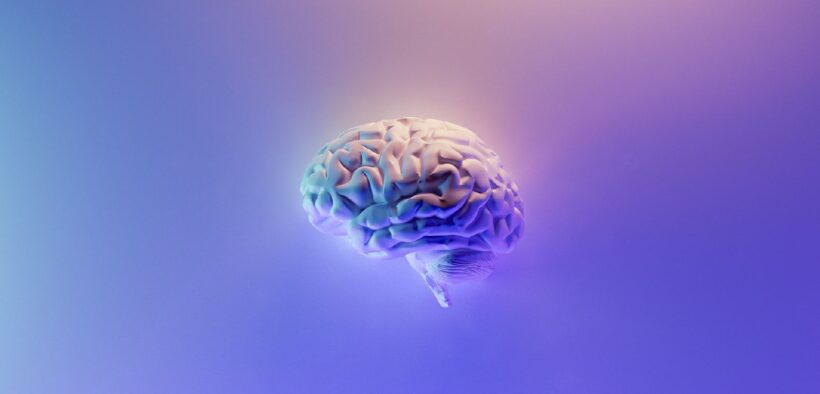As a student, I would often find myself buried in textbooks, meticulously reviewing notes, highlighting my textbook, and relistening to lectures I had recorded only to score an average grade or lower on my exams. At times, it felt like the harder I studied, the worse I did. This perplexing situation eventually led me to question my aptitude for learning, to succumb to self-doubt (Perhaps I’m just not a history person). This realization shaped a deficit mindset within me, dampening the enthusiasm with which I initially approached those courses.
My educational journey has been driven by an enduring curiosity about the intricacies of the human experience through the lens of the nervous system. My path began at the University of Michigan–Dearborn, where I studied philosophy during my undergraduate years. I took a course on human consciousness, and I grew increasingly fascinated with the nervous system and consciousness. After years of study, culminating in a doctoral degree in cellular and clinical neurobiology and eight years of postdoctoral fellowship, I began to teach.
In the classroom, not only did I thoroughly enjoy engaging with my students, but I also discovered a space where I could begin to understand and address the self-imposed deficit mindset I had developed in school. Sharing my experience with curious minds, co-creating knowledge, and learning alongside them rejuvenated my love for education.
It didn’t take long for it to dawn on me that many of my students were experiencing struggles reminiscent of my own—putting in the effort to study, showing up, and trying their best only to falter on exams. These experiences led many of them to believe they were inadequate, perpetuating a cycle of self-doubt.
Learning, I finally realized—ironically, after years of learning about the brain—is not a linear path but a complex process, where mere studying does not equate to understanding. If a student studies diligently and still fails, it is not necessarily an innate flaw in the student but possibly a reflection of what’s hindering their learning process.
The complexity of learning
Numerous planes and angles must align perfectly in order to go beyond rote memorization to meaningful learning—where information is integrated and applied, fostering connections and relationships. From learning environments to emotional states, many factors can stifle learning. We can think of this fact as the difference between the “learning brain” and the “survival brain,” a dyad far removed from the debunked notion of learning styles.
Learning brain versus survival brain
Imagine the human brain as an orchestra, with different sections performing specialized functions. When a person is relaxed and curious, they are operating from the learning brain, focused on logic, planning, and future-oriented thinking. This state can be likened to the calm cohesion of a well-rehearsed symphony. Integration and application of information occur effortlessly as meaningful learning hinges on relationships and connections.
By contrast, the survival brain is triggered by stress or trauma and focuses solely on immediate threats. It is akin to a cacophonous fortissimo, when only the most urgent instruments are heard and the subtler notes are drowned out. It shuts down higher-functioning tasks like logic and planning, focusing only on survival instincts like fight, flight, or freeze. Today, many students unknowingly find themselves trapped in this state, unable to regulate it, and arrive at the misguided conclusion that they must be incapable.
Psychologist Jacob Ham’s YouTube video on these two states, aimed at K–12 children, outlines these differences adeptly. Though it’s intended for a younger audience, I often share it with my students, emphasizing that these principles apply to learners of all ages. I share the video not merely for understanding but to empower them with knowledge about their physiology and learning. After we all watch the video, I engage my students with a few reflections prompts about self-awareness, self-regulation, and co-regulation. Over the past few years, my students have shared with me that this activity helps them recognize when they are in the survival brain state and ask for help.
Practical approaches
At the beginning of the semester, and to address these complexities, I engage my students in conversations about learning methods, misconceptions, and the multifaceted nature of learning. This proactive approach helps students think about learning how to learn and ponder their cognitive processes. By sharing my personal journey and using resources like Ham’s video, I encourage students to do the following four things:
- Understand their physiology, which I do by briefly introducing them to the neurobiology of learning, akin to providing a manual to a sophisticated machine
- Appreciate different stress levels, which I do by helping them learn to discern between life-threatening stress and daily pressures, much like distinguishing between a storm and a mild breeze
- Develop self-awareness, which I do by modeling for them and encouraging them to recognize and modulate their stress response, similar to tuning up a musical instrument for optimal performance
- Seek help when overwhelmed, which I do by normalizing seeking help and foster an environment where seeking assistance is perceived not as a weakness but as a strength, like calling upon a fellow musician to perfect a complex piece
The journey from struggling student to empathetic educator has equipped me to recognize that learning is an intricate dance between intellect and emotion, rigor and compassion. By understanding the nuances of the learning and survival brain, we can compose an educational symphony that resonates with each unique learner. By acknowledging the personal and intricate nature of learning, we can cultivate a learning climate that fosters curiosity, courage, and success in our students.
Mays Imad, PhD, is an associate professor of biology and equity pedagogy at Connecticut College. Previously, she taught for 14 years at Pima Community College, where she also founded the teaching and learning center. She is a Gardner Institute Fellow for Undergraduate Education, an AAC&U Senior STEM Fellow, and a Mind and Life Institute Fellow.









